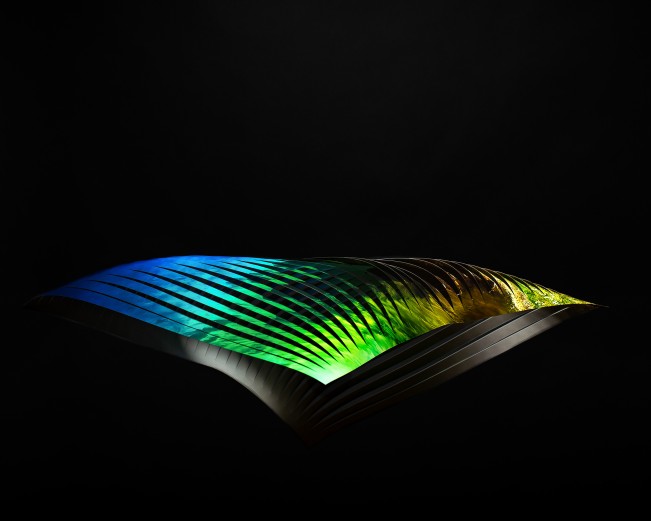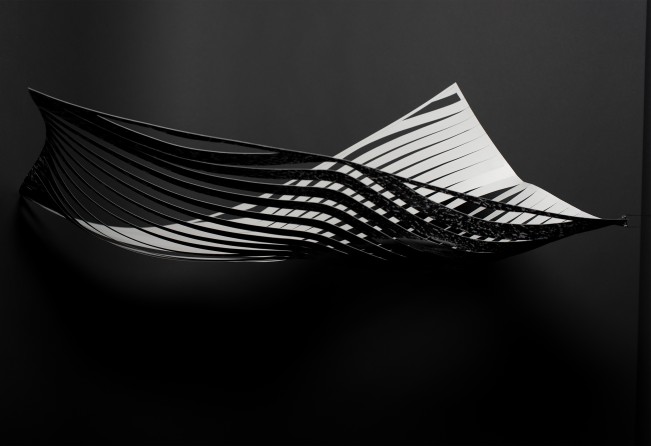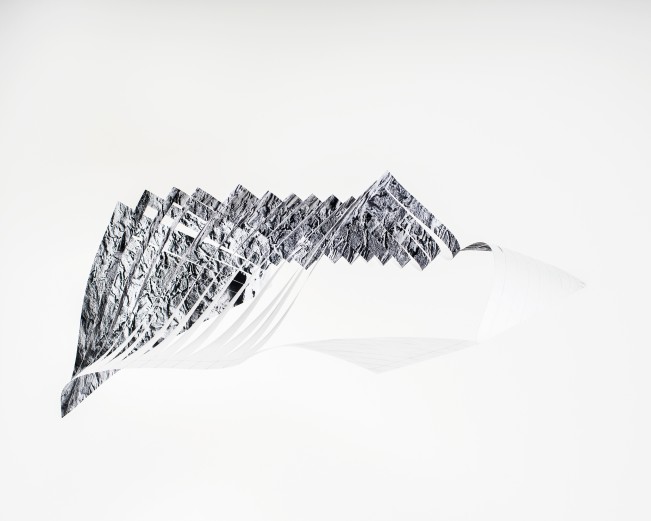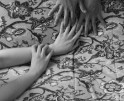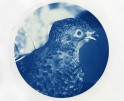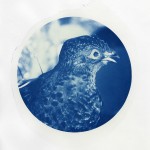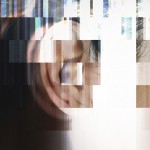The Hand in Nature: Josh Hobson, Waveforms & Uncontained
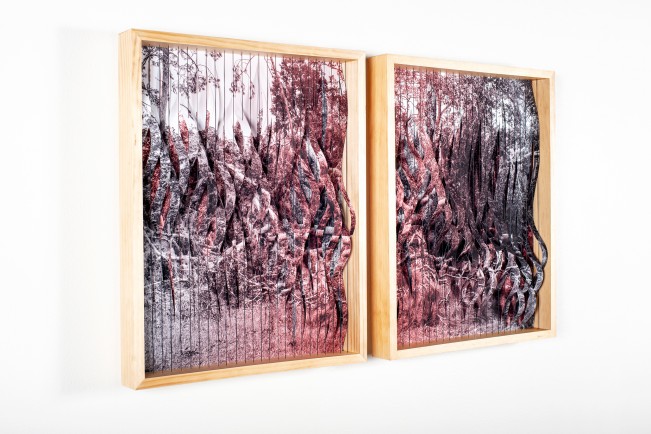
©Josh Hobson, Augmented Landscape (After Irma) Archival Inkjet Prints, Pine, Lead, Dacron, 25″x20″ (each), 2019
The Hand in Nature: a week of photographs that manipulates how we see and foresee our environment.
Photographs help us process what is happening in the world, and this week we’ll be following photographers whose work inspects humans’ impact on the earth. More importantly, the posts will focus on how each photographer uses their hand in the manipulation of imagery. Many of the photographers’ works curiously demonstrate our history and future relationship with the earth.
Today we will discuss Josh Hobson’s two series, Waveforms and Uncontained.
Although Josh is a trained photographer receiving a BFA and MFA in photography, most of his images for these series are sourced or, using his term, “mined” from various resources such as NASA and USGS. He uses the word “mining” specifically about his process of finding imagery to allude to the metaphor of mining and land use. Hobson likes using aerial and satellite images for their authorless quality and says they “represent the detached relationship with the natural world that has led us to our current state of environmental crisis.”
In the imagery that he chooses, we see reference to ecological events such as the Deepwater Horizon Oil Spill, the desertification of Nambia, and the dissentigration of the Brunt Ice Shelf. Also mixed in are photos of the Rover landing site on Mars, which he says hints at the future of landscapes that humans might expand. The only personal image we see in any of his works is called After Irma, an image Josh took in Florida. Hobson lived in Florida during Hurricane Irma and was around to see the destruction. Josh talks about the luxury of distance that one can have with ecological disasters.
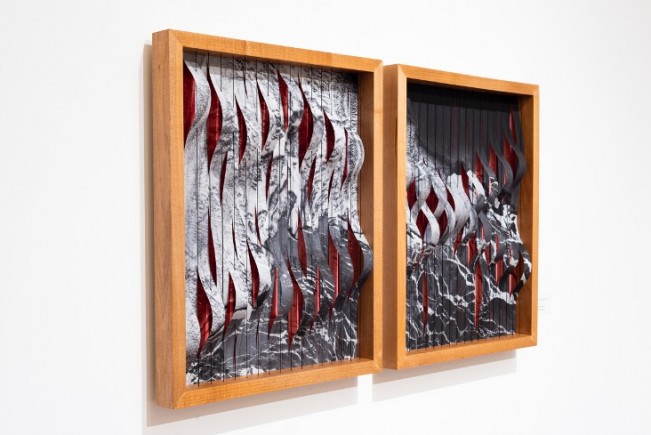
©Josh Hobson, Augmented Landscape ( Brunt Ice Shelf) Archival Inkjet Prints, Hardwood, Lead, Dacron, 25″x20″ (each), 2020
Since 2018, Hobson has been working on his series, Waveforms. Two distinct sub-series of Waveforms; Augmented Landscapes and Performed Landscapes have naturally developed throughout his process. Permanent physical manipulations of photograph assemblages and staged physical photographic interventions are seen. The combined approaches allow Josh to explore “the tension between human ingenuity and the limits of natural systems.”
Augmented Landscapes creates a new topographic form with each image. Photographs are cut, framed, and held up by the flexible wires. This approach creates a unique three-dimensional surface made of two-dimensional photographic pieces. There is a new tension in these images, where the ripple effect of the cuts interacts with the linear lines of the wires. The results create a new dimension or a new language in which to look at these photographs. The work is physical and creates a duality of looking while interacting with the pieces. Shadows and gradients seem like two-dimensional design elements when looking at the pieces straight on. But looking from the side, one will see the physicality of the print. In bending and contorting the images a sculptural form is presented removing itself from a two-dimensional image. In most images, due to the bending the contorting one gets a peek of what lies underneath.
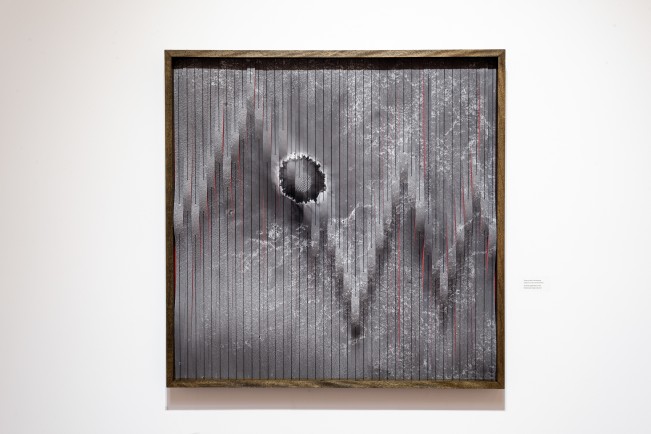
©Josh Hobson, Augmented Landscape (Opportunity Landing Site), Archival Pigment Prints, Hardwood, Dacron, 42″x42”, 2020
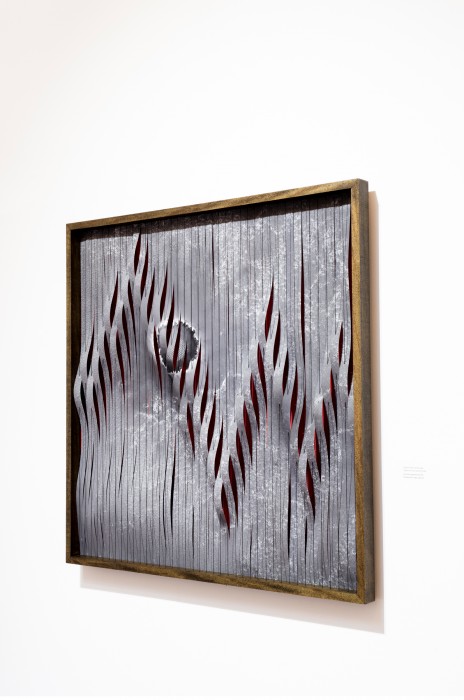
©Josh Hobson, Augmented Landscape (Opportunity Landing Site), Archival Pigment Prints, Hardwood, Dacron, 42″x42”, 2020
Josh reflects on his process of the Augmented Landscapes to mimic the ideas of the “Green Revolution.” This term presupposes humans capability to innovate out of any potential environmental emergency. In a subtle gesture to his process and referencing human impacts on the landscape, Josh lets his audience know that lead is one of the unseen materials. Hidden under the frame structure, sinkers made of lead weigh the wires that hold the images together. He relates this unseen understructure of lead to the hidden methods of mineral extractions.

©Josh Hobson, Augmented Landscape (Greenland) Archival Inkjet Prints, Pine, Lead, Dacron, 25″x20″ (each), 2018
On the other hand, Performed Landscapes are about having less control. Josh mentions that this set of work came from a happy accident. When he picked up the cut physical prints to make photo assemblages, Josh noticed how they fell and formed new formations. Hobson then started exploring these temporal moments, creating a new illusion of topographic forms. He began to tear, cut, and fold these same aerial images. The images are also staged and lit to perform the role of landscapes. Satellite images the Deepwater Horizon oil spill in Performed Landscape #19 and imagery of Mars seen in Performed Landscape #11 mimic traditional ideas of what we perceive as mountain landscapes. Josh connects the process of making this work to the idea that “the earth has certain limits that we cross at our own peril.”
And while the whole photo series of Waveforms is a more conceptual and controlled approach to deconstructing landscapes, Josh’s Uncontained series takes on a more emotional and even anxious response to climate change. Uncontained also uses “mined” imagery, specifically focusing on images of forest fires. This work uses lumen printing techniques, where Josh creates contact prints of photo transparencies and physical objects, like rocks. Lumen printing is an alternative process that exposes traditional gelatin silver paper to UV light outside the controlled environment of the darkroom. Josh discusses the visceral process of making these lumen prints during a harsh heatwave, which would get up to temperatures as high as 115 degrees Fahrenheit. He names specific images Sunstroke in memory of the physicality of this method. The process of the sun exposure on development becomes a key conceptual component in the work as Josh reflects on the sun having the capacity to bring life but also extinguish it.
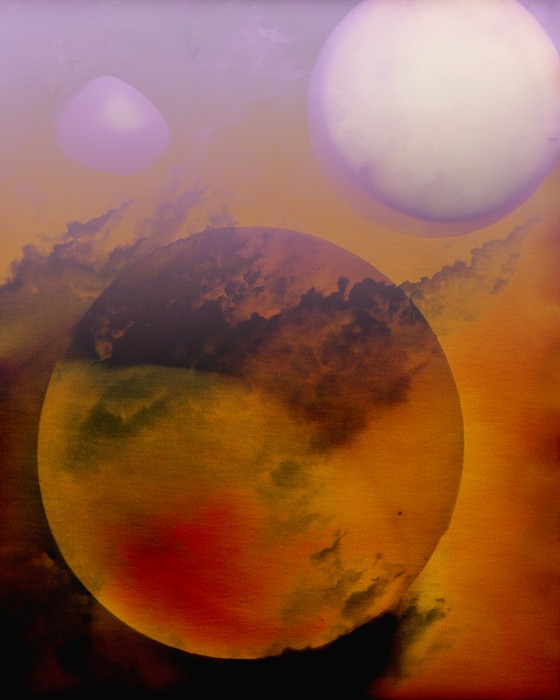
©Josh Hobson, Sunstroke I (from Uncontained) Archival Pigment Print* Enlarged Lumen Print, 44”x 54”, 2021
Lumen printing allows for the alchemic qualities of photo to shine, where mistakes and imperfections result in dramatic colors. Josh’s images appear to be supernatural and atmospheric in interpretation. What is known about the imagery becomes subservient to the process. For example, the smoke in the original image now resembles clouds. There are similarities between Uncontained and Waveforms in that Josh physically manipulates photographs as objects. Not only are objects layered on the contact prints while exposing them, but bent transparencies are also layered to create rippling designs of light that affect the print.
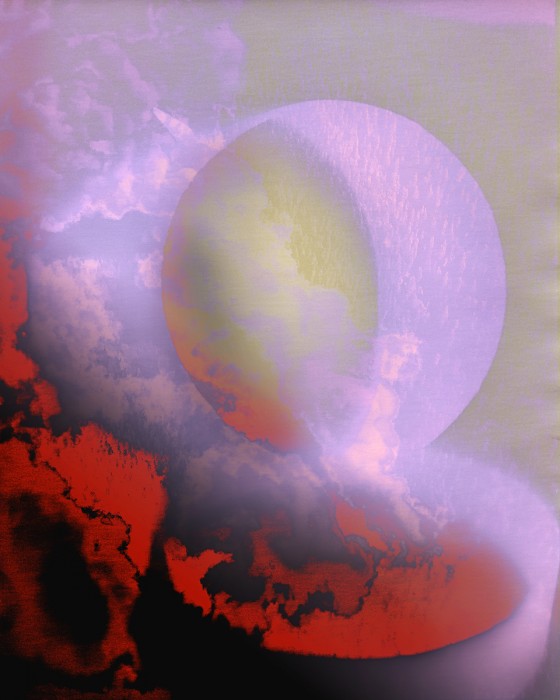
©Josh Hobson, Sunstroke V (from Uncontained) Archival Pigment Print* Enlarged Lumen Print, 44”x 54”, 2022
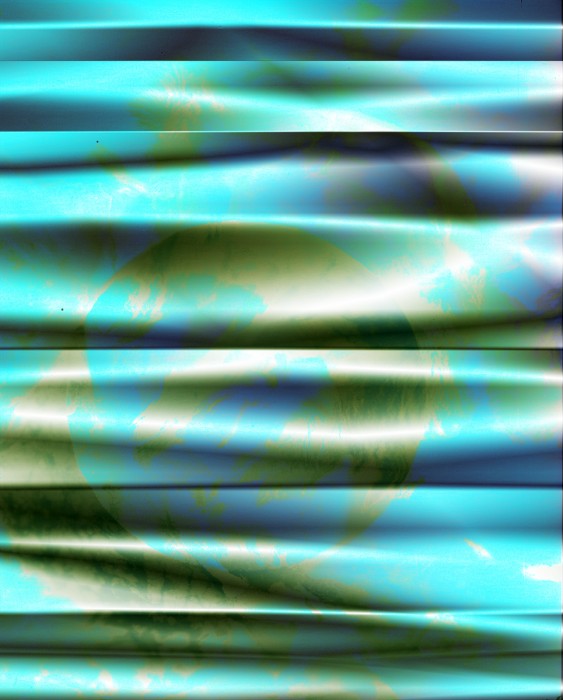
©Josh Hobson, Sunstroke VII (from Uncontained) Archival Pigment Print* Enlarged Lumen Print, 44”x 54”, 2022
Josh says, “to combat climate change, we must use all the tools at our disposal: technological innovation, behavior modification, and education, to just name a few.” Due to the fact that we get information about environmental travesties through imagery, he sees the role of the artist and photographer as one that addresses this urgency. Josh intentionally wants to challenge the language of photography that we know and applies this approach to question our relation to the environment. His work offers an arresting and cerebral approach to the landscape for those who are looking for more.
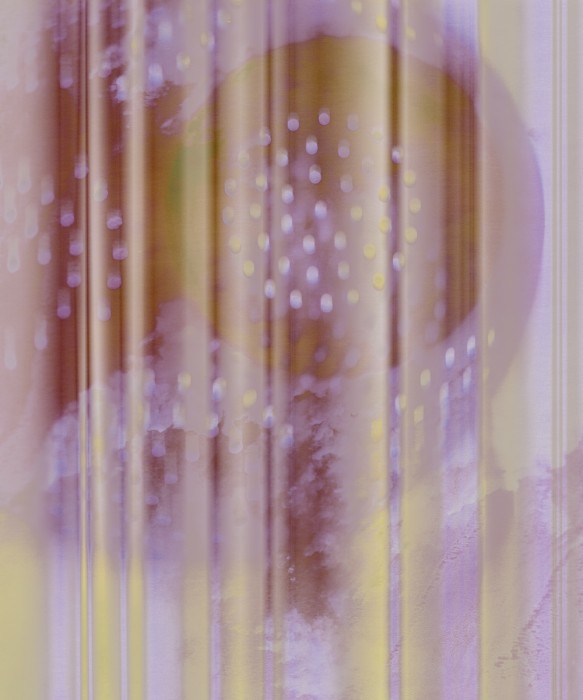
©Josh Hobson, Sunstroke IX (from Uncontained) Archival Pigment Print* Enlarged Lumen Print, 44”x 54”, 2022
Joshua Hobson is a lens-based artist based in Spokane, WA. He studied photography at the University of Florida and received a BFA in Creative Photography in 2007 and an MFA in 2017. Josh regularly exhibits his work including exhibitions at Candela Books, Colorado Center for Photographic Art, Detroit Center for Contemporary Photography, Newspace Center for Photography, SOHO Photo, Wall Space Gallery, Carte Blanche Gallery, Brooklyn Waterfront Arts Coalition Photo Center Northwest and the Center for Fine Art Photography. In 2013 Josh completed a humanitarian photo project on behalf of United Planet and Photographer’s Without Borders, traveling to Dar Es Salaam, Tanzania to document the development projects of United Planet. In 2015 his first permanent public artwork, Continua: Visualizing Universal Scale, was installed in the Clinical and Translational Science Institute on the University of Florida campus. Josh is currently a lecturer in photography at Eastern Washington University. Josh’s work is engaged with an analysis of, and experimentation with the fundamental attributes of the medium. His practice incorporates tabletop studio photography, on-site photography and camera-less concrete processes. Through material engagement and process-oriented actions Josh’s work aims to shed light on the various uses and origins of the photographic image.
Check out more of Josh Hobson’s work on his website here.
Follow Josh on instagram – @joshhobsonstudio
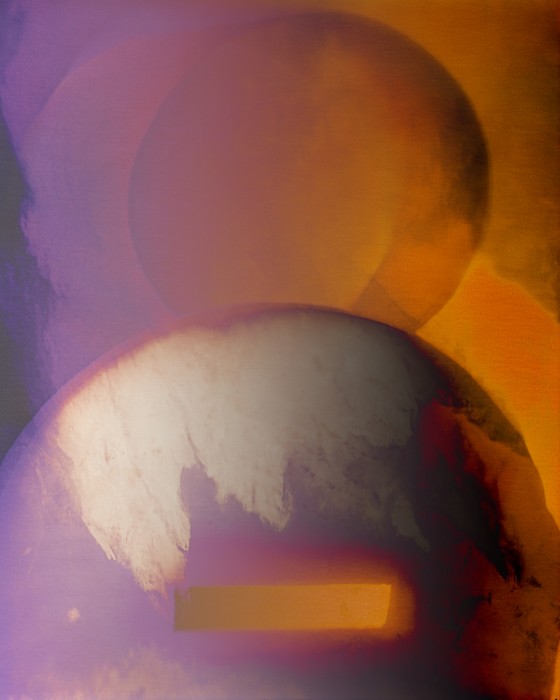
©Josh Hobson, Sunstroke II (from Uncontained) Archival Pigment Print*Enlarged Lumen Print, 44”x 54”, 2021
Sarah Knobel is a photographer, video and installation artist that works with everyday items to find new ways to identify our relationship with ideas of the natural, artificial, beautiful and repulsive. Her work has been featured in exhibitions nationally and internationally, which includes Miami, Seattle, Portland, Kansas City, Washington DC, Germany, Belgium, Korea and Greece. Sarah holds an MFA in Photography from the Design Architecture Art and Planning Program at the University of Cincinnati and a BFA in Studio Art from Texas State University. She is currently an Assistant Professor of Art at St. Lawrence University in Canton, New York.
Follow Sarah on Instagram at @sknobel.
Posts on Lenscratch may not be reproduced without the permission of the Lenscratch staff and the photographer.
Recommended
-
Chelsea Tan: before the light escapes us…July 7th, 2024
-
Josh Raftery: Start the Story at the EndJune 28th, 2024
-
THE CENTER AWARDS: ME&EVE GRANT: ANNA REEDMay 22nd, 2024
-
Earth Week: Casey Lance Brown: KudzillaApril 25th, 2024
-
Earth Month: Photographers on Photographers, Dennis DeHart in conversation with Laura PlagemanApril 16th, 2024

